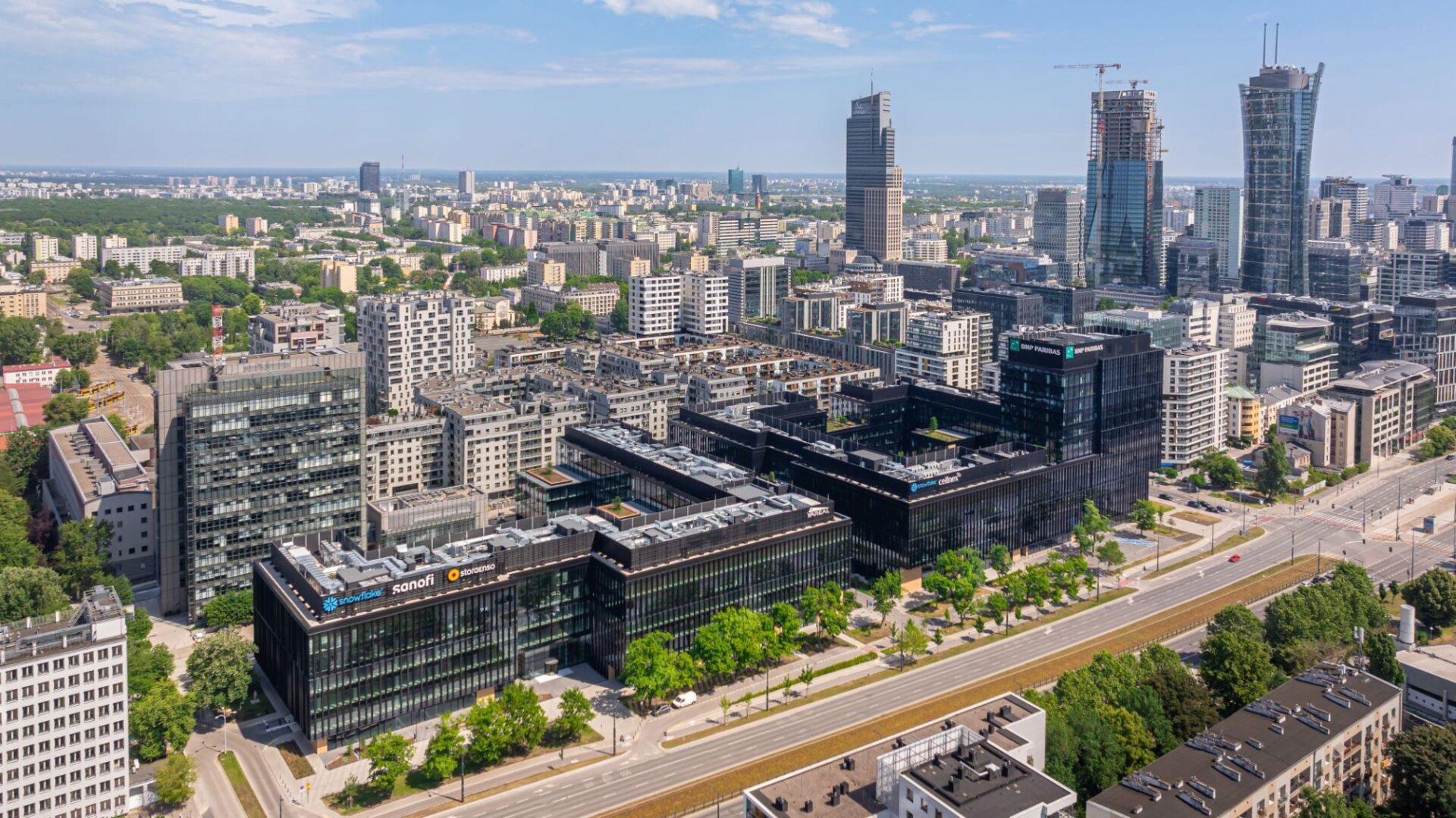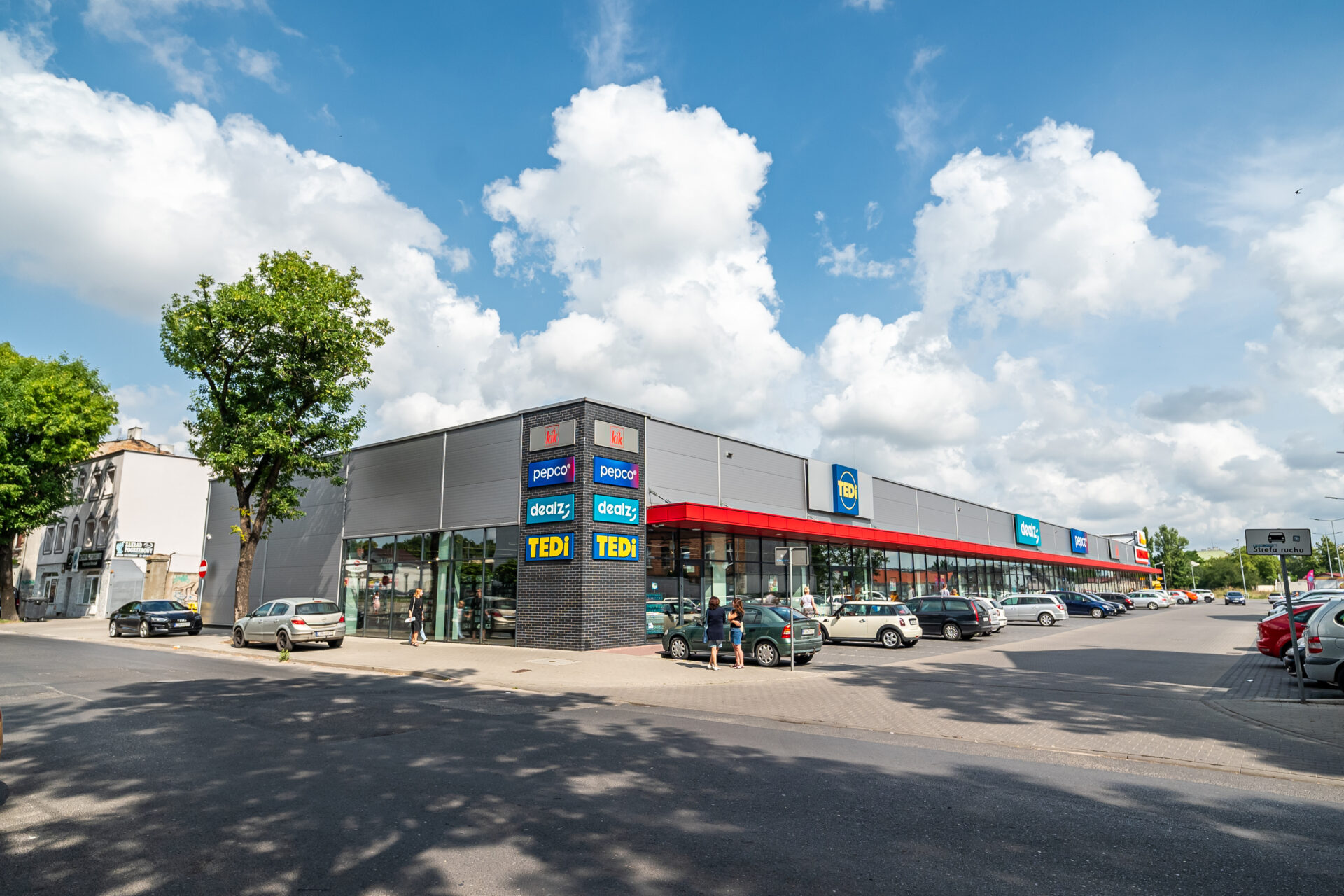Avison Young and LCP Properties presented their newest report on the retail parks and the convenience retail investment market sectors in Poland. In 2021, interest in retail parks and convenience products stood strong. The unstable pandemic situation kept resilient retail schemes on the investors’ focal point. The amount of retail parks acquired confirms demand for such assets, also in smaller towns.
Over the last two years, the Avison Young team in Poland has been the leader with over €200 million transacted in this retail segment. LCP Properties has been the most active investor in the retail park and convenience retail market, with a 36 percent share in total investment volume in this sector.
Overview of the retail investment market in Poland
The retail investment market in terms of transacted volumes is still far behind the pre-covid levels. Nevertheless, the number of transactions in this sector breaks records. High liquidity accompanied by the lower volume reflects the investors’ turn to small retail parks and convenience schemes, including those located in smaller cities and towns.
2021 recorded a slight revival of shopping centres transactions in major cities. All those investments were transacted with an opportunity to create value or for redevelopment. Albeit, retail parks and convenience schemes persist to be the shining star of the Polish investment market and the most sought-after product, with an increasing share in total investment retail volumes.
Note: Following report focuses on the transacted retail parks and convenience retail schemes, defined as retail facilities with convenience offers, i.e. retail parks, convenience centres and stand‑alone grocery.
LCP: “Both retail parks and convenience centres have remained in the area of constant interest of investors for several years, and their popularity is still growing. These formats enable to make quick purchases, and thanks to a wide range of basic products at affordable prices, they are popular among customers.
Investors appreciated the security and stability of revenues that retail parks and convenience centres provided during the COVID-19 pandemic. Chained operators, perfectly recognizable in the Polish and foreign markets, guarantee appropriate product quality, constant income and professional operations. The strengths of this type of facility include direct access to the premises from the parking lot and the relatively small total leasable area, thanks to which they were mostly not subject to pandemic restrictions.
Also from the tenants’ point of view, facilities of convenience type seem to be more and more preferred location, because both the level of rent and service charges are much lower than in large shopping galleries. Retail parks and convenience centres are often located in residential areas providing quick, everyday shopping offers.”
Investment volume
After the second year shaped by the pandemic, the popularity of convenience purchases settled down for good. As a consequence investors’ interest in the retail parks and convenience retail assets is thriving.
Retail parks and convenience retail schemes remain the most in-demand product as far as the Polish retail investment market is concerned. Contrary to the years 2015‑2019, when investment volume transacted within the analysed sector did not exceed 5 percent, 2020 saw the new height of over 20 percent share of total retail volume (as many other investments were put on hold due to the pandemic), followed by 2021 with 12 percent. The market growth dynamic is relatively slow because the majority of investors are long‑term holders. Therefore, investment volume depends mainly on developers and new assets delivered.
Stand-alone grocery stores grew their stake compared to 2020, limiting the proportion of convenience centres. In terms of the number of deals, retail parks and convenience retail constantly rank first. 22 transactions completed in 2021 are the record-breaking result. The transaction structure indicates a slight increase of small convenience centres compared to 2020. We believe the investors’ sentiment toward retail parks and convenience retail will be even stronger in the upcoming months.
In 2021 Avison Young brokered JV cooperation between Trei Real Estate and Patron Capital. The Joint Venture was established in order to develop retail parks portfolio located across Poland under Vendo brand. Thus, the €140 million value of this transaction is not included in statistics, as they present pure investment transactions concerning existing assets only. Similarly, statistics do not include redevelopment transactions.
Geographical distribution
Retail parks and convenience retail transactions continued to polarise between major agglomerations and small cities below 50,000 inhabitants.
Ongoing polarization of sold retail parks and convenience retail properties was observed in 2021 in terms of the city size. The vast majority of schemes were transacted in small cities and in major metropolitan areas (including the city and neighbouring municipalities). The bigger city, excluding agglomeration markets, the lower number of convenience retail schemes transacted.
Such distribution of investment transactions in the analysed retail segment reflects on the one hand investors’ appetite for assets in prime locations and on the other hand intensive development of convenience retail properties in smaller cities, which attract customers from surrounding municipalities.
LCP: “Looking for new locations, retail chains diversify the store formats, adjusting them to the current market needs. Small towns and rural areas located in the impact zones of large urban centres are a great place for food operators, discount chains, value retailers and other chain stores with basic offers, as well as for local entrepreneurs. Smaller cities are a natural direction of further expansion for many brands. Following the chain stores development in smaller and smaller towns, there is a need to build retail parks in this type of location. There are retail chains (not only food operators), which started to operate in towns with less than 8,000 inhabitants. Tenants’ location decisions are usually preceded by in-depth analyses, taking into account not only the size of the city but also the catchment area potential, the local labour market, the purchasing power of residents and other conditions, such as tourist traffic. Customers continue to put convenience high on their priority list. In addition, the development of retail parks in smaller towns and on the outskirts of big cities is also fostered by the dynamic development of the residential sector. Combining these functions may be beneficial for both sectors due to attractive coverage zones on a micro-scale.”
Major deals
Among 22 investment deals recorded in the analysed sector, 18 of them were retail parks and small, convenience centres. The biggest schemes being the subject of transactions were Premium Park in Lubrza, Pasaż Warmiński in Lidzbark Warmiński and Pasaż Wiślany in Grudziądz. However, small convenience retail properties with GLA below 5,000 sqm represented the vast majority of sold properties. Some of them are characterised by retail space of less than 2,000 sqm of GLA and accommodate only a few tenants. The age of transacted properties is another interesting pattern regarding transactions in retail parks and convenience centres in 2021. Over half of them were opened in 2020 or 2021, so these are new completions built along with the ballooning convenience trend and bought within the primary market. Interestingly, the second outstanding group is composed of approximately 10-year-old properties, which confirms the investors’ long term hold.
Active investors
Although the Polish retail park and convenience retail market continue to attract investors, 2021 did not record any newcomers. The investment market in the analysed sector has been shaped by major players during the last two years. Three dominant investors were responsible for over of transacted volume in 2020-2021.
The undisputed market leader is LCP Properties, with a 36 percent share in total investment volume in retail parks and convenience retail sector, as well as a 30 percent share concerning the size (sqm) and the number of investment deals. The second most active player achieved 15 percent share both in volume and number of transactions, and the third one – had a 13 percent and 9 percent share respectively.
2021 itself was even more prevailed by LCP Properties investment activity, which was involved in almost 40 percent of transactions and investment volume sold in the retail park and convenience retail market.
LCP: “2021 was extremely intense for us, especially in terms of acquisitions. In 2022, we plan to expand into development projects as well. Some of them are currently in the realization stage, i.e. in Lubawa with Lidl as a food anchor, in Świdnik with Biedronka discount store, and also in Rawa Mazowiecka with Lidl. We are planning further construction projects. After completion, the value of our investments in Poland will reach €450 million at the end of 2022.”
Yields & values
Prime yields in Poland remained relatively stable in 2021. The yield gap between prime retail parks and prime warehouse and office properties exceeds 200 bps, which is an exceptional result compared to Western Europe’s capital cities. Due to the lack of product and high interest in retail parks and convenience retail assets, further yield compression is forecasted.
Outside major markets, where the vast majority of retail parks and convenience retail schemes were transacted, yield levels depend on many external factors. The main factor is the location of the scheme, followed by city size and its position in the region as well as the presence of a food anchor and the length of the lease agreements.
Looking back at the transactions completed between 2015 and 2019, the trend of bigger property sizes reaching lower yields and higher capital values was detectable. That dependence showed that bigger lot sizes were perceived by investors as safer investments and were valued higher. Transactions that took place in 2020-2021 were characterised by a quite different regularity. Despite the observed tendency is not straightforward, smaller schemes achieved higher prices per 1 sqm. This investors’ turn to convenience retail reflects the echo of the COVID-19 pandemic. Yield analysis indicates higher values achieved by assets with a high-income share of food operators.







